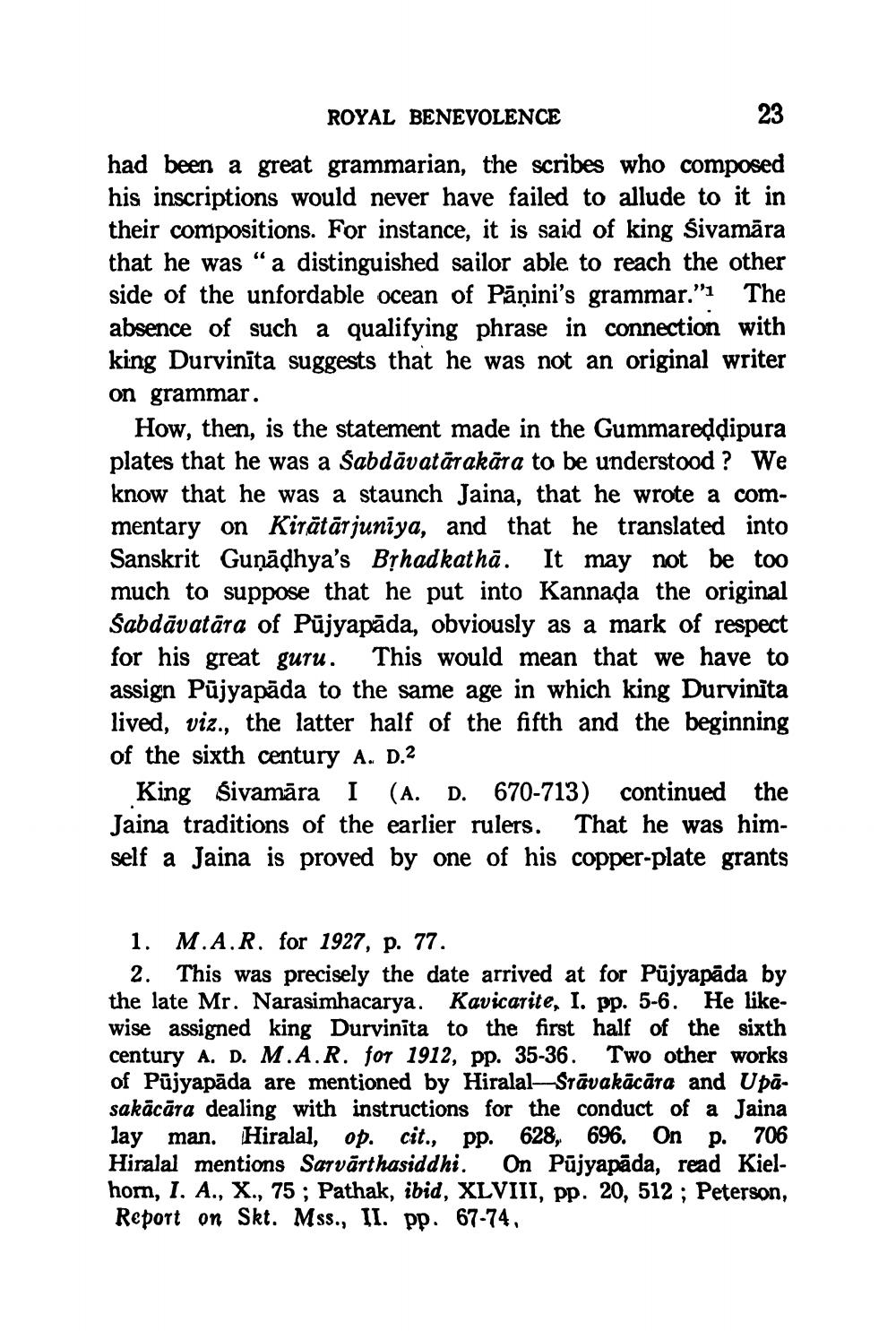________________
ROYAL BENEVOLENCE
23
had been a great grammarian, the scribes who composed his inscriptions would never have failed to allude to it in their compositions. For instance, it is said of king sivamāra that he was “a distinguished sailor able to reach the other side of the unfordable ocean of Pāņini's grammar."1 The absence of such a qualifying phrase in connection with king Durvinīta suggests that he was not an original writer on grammar.
How, then, is the statement made in the Gummareddipura plates that he was a Sabdávatārakära to be understood ? We know that he was a staunch Jaina, that he wrote a commentary on Kirätārjuniya, and that he translated into Sanskrit Guņādhya's BỊhadkathā. It may not be too much to suppose that he put into Kannada the original Sabdāvatāra of Pūjyapāda, obviously as a mark of respect for his great guru. This would mean that we have to assign Pūjyapāda to the same age in which king Durvinīta lived, viz., the latter half of the fifth and the beginning of the sixth century A. D.2
King Sivamāra I (A. D. 670-713) continued the Jaina traditions of the earlier rulers. That he was himself a Jaina is proved by one of his copper-plate grants
1. M.A.R. for 1927, p. 77.
2. This was precisely the date arrived at for Pūjyapāda by the late Mr. Narasimhacarya. Kavicarite, I. pp. 5-6. He likewise assigned king Durvinita to the first half of the sixth century A. D. M.A.R. for 1912, pp. 35-36. Two other works of Pujyapāda are mentioned by Hiralal-Stāvakācāra and Upā. sakācāra dealing with instructions for the conduct of a Jaina lay man. Hiralal, op. cit., pp. 628,696. On p. 706 Hiralal mentions Sarvärthasiddhi. On Pūjyapāda, read Kielhom, I. A., X., 75 ; Pathak, ibid, XLVIII, pp. 20, 512 ; Peterson, Report on Skt. Mss., II. pp. 67-74.




